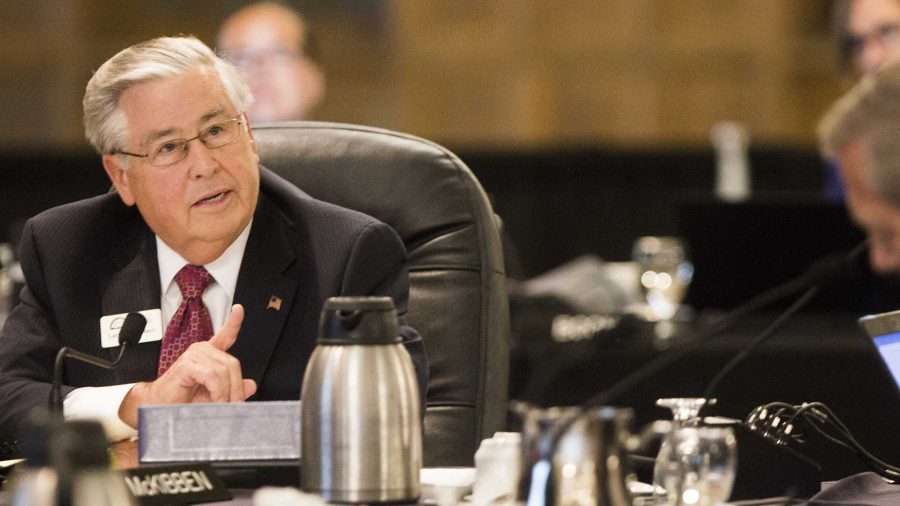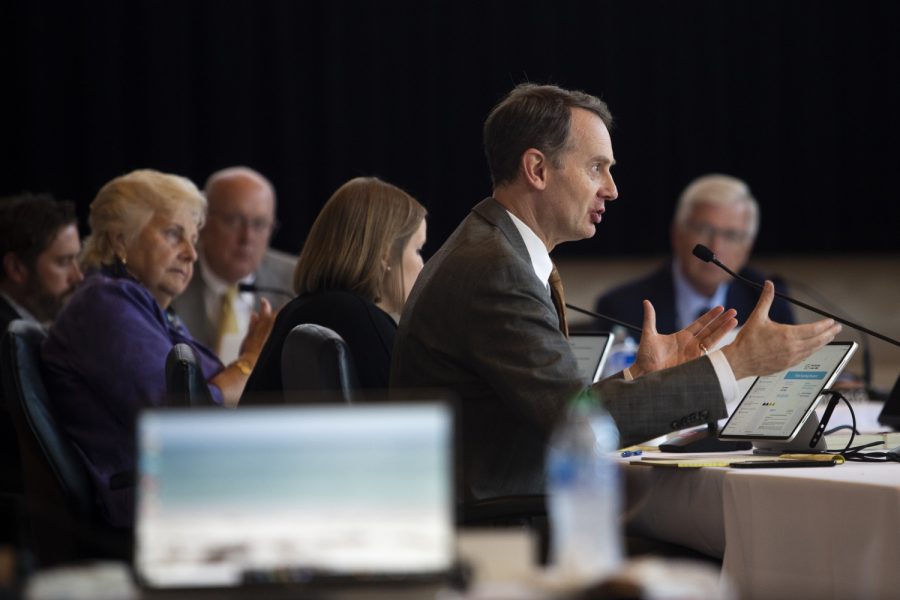COUNCIL BLUFFS — While facing dwindling support from the state, Iowa’s public universities have made it a priority to boost financial aid to offset the growing cost of financing higher education.
In 2016-17, the state Board of Regents institutions awarded $1.09 billion in financial aid dollars to students, up 5.2 percent from 2015-16, according to the regents’ annual financial-aid report. Financial aid comes in the form of scholarships, grants, loans, and campus employment.
Across the three regent universities, as enrollment has grown, federal financial aid — 79 percent of which comes in the form of loans that need to be repaid — has leveled off. Institutional aid and aid from other sources, such as private organizations and foundations, has increased to compensate.
Financial aid by funding source
2015-16
- Federal: $520.2 M
- State: $2.9 M
- Institutional: $390.7 M
- Other: $118.6 M
2016-17
- Federal: $534.3 M
- State: $2.9 M
- Institutional: $424.5 M
- Other: $124.4 M
Source: Iowa Board of Regents
“There’s much more pressure on our institutions to use institutional dollars and to fundraise to increase scholarship opportunities,” Kathy Bialk, the University of Iowa assistant provost and director of Student Financial Aid, told the regents at their April 12 meeting.
State aid has dropped further, from $9.6 million in 2006-07 to $2.9 million in recent years. Iowa ranks last in the nation for state-awarded, need-based financial aid.
RELATED: Report reveals declining debt among grads
That statistic prompted the regents to request an additional $12 million in state appropriations for fiscal 2019 from the Iowa Legislature to dedicate to resident undergraduate financial aid. Legislators have not yet moved on that request as the state’s budget for the next fiscal year remains up in the air, though Tuesday is supposed to mark the end of the current legislative session.
Regent Larry McKibben, a former state senator, was one of several who spoke at the meeting to urge the state to fund the appropriations request and voiced concerns about keeping the state’s neediest residents from attending college.
“There are 150 legislators in Des Moines, but there’s only one governor,” McKibben said. “The buck stops at the top. I’m begging the governor to give us that $12 million we are needing so desperately.”
RELATED: Financial aid’s role in offsetting rising tuition concerns some UI students
Gov. Kim Reynolds, a Republican, recently completed fiscal 2018 budget cuts amounting to $10.9 million for the UI and Iowa State University. Unsettled state support delayed the regents’ decision on tuition rates for the 2018-19 academic year. Rates won’t be set until June, but the regents are looking at tuition hikes under 4 percent.
As financial aid has increased to bring down the total cost of attendance below the advertised sticker price with tuition on the rise, debt among graduates at the regent universities has fallen 3 percent from 2015-16.
At the UI, although nonresident undergraduates pay more than three times what residents pay in tuition, 38.9 percent left with debt in 2016-17 — 20 percentage points fewer than the 58.9 percent of residents who left with a debt load. Nonresidents carry more of a debt load, however, with an average of $32,908 to repay compared with $25,599 for residents.
RELATED: Iowa’s public universities struggle to achieve predictability with tuition
Roberta Johnson, ISU director of Student Financial Aid, said given the resources available, the institutions are holding their own on the financial-aid front, though student-loan debt continues to be an issue the universities work on.
“We do not want our students to mortgage their futures,” Johnson said.












